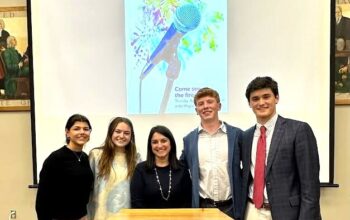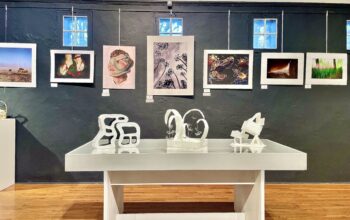
Steffi Badanes
Reporter
Rapunzel was trapped in a tower and eventually saved by the prince after he climbed to the top by her hair. Cinderella was magically transformed from a servant for her horrid step-family to a princess dancing the night away with her prince at the ball. We all know the classic Disney story of the damsel in distress: after considerable toil, she is rescued by the handsome prince and living happily ever after.
But there is some controversy over these timeless stories. Some argue that these of “happy endings” may be pushing young girls to speed through childhood. In The Little Mermaid (1989), Ariel fell in love with a human after she traded her voice for legs. She defeated the evil sea witch, Ursula, married Prince Eric, and lives happily ever after. “The fact that Ariel got married when she was 16 can make people think that they have to grow up quickly,” junior Morgan Sheibley said.
Others feel that these early Disney princesses exhibit negative stereotypes of women. “Early Disney movies were very girly,” junior Christy Vasquez said. “In Sleeping Beauty (1959), she has the long dress and she’s sewing. It’s completely sexist.”
Morgan claimed that early Disney heroines didn’t represent good role models for young children. “It’s all very far fetched because most plots have the princess marry a prince, normally a man whom she met a couple of days earlier,” she said. “It might teach kids to trust strangers.”
Junior Yoon Chi agrees with Morgan. “Snow White took an apple from a stranger, which completely goes against the ‘don’t take candy from strangers’ lesson,” she said.
However, there are a number of more recent Disney films that have broken the cycle. “When [Mulan] (the lead of the 1998 movie by the same name) saved the men, king, and entire town, she got the credit,” senior Maggie Conroy said.
In The Beauty and the Beast (1991), Belle falls in love with a hideous beast instead of the most handsome man in the village, a willing suitor. “Belle was a very smart girl who read and was not like the stupid ‘damsel in distress’ who needs rescuing,” junior Sarah Dittmeier said.
One of the newer Disney flicks, The Princess and the Frog (2009), has seemingly taken a twist on the classic fairy tale. “The Princess and the Frog is more diverse, trying to appeal a larger group of people,” junior Alex Vernon said. “It includes multiple ethnicities and is more relatable.”
Morgan takes notice at the fact that Tiana (the titular “princess”), who dreams of owning her own restaurant, goes through ups and downs with her prince on her journey to transform from frog to human. “When the princess kisses the frog, she turns into a frog and he has to earn her trust before they can have a happy ending,” she said.
As people phase out of a childhood where they admired all of the Disney princesses, opinions are changing. “As a kid, everyone wants to be a princess. Now, wanting that Disney dream just seems superficial,” sophomore Katie Melland said.
English Department Chair Ms. Hiedi D’Acosta took notice of how children growing up with the new generation of Disney movies have had a broader view of the heroines. “My three year old niece believes that a princess is someone who is fragile, and spunky, someone who makes up her own mind,” she said. “What children need to see is themselves represented on the screen.”
Junior Maddie Gordon feels that Disney heroines illustrate a false meaning of what is typically perceived as a perfect person. “Growing up, you start to see all of their flaws, but you still respect them in their own way,” she said. “People need to realize that they are just stories.”
It’s clear that a Disney heroine has evolved from a princess who needs a prince to lead her to a happy ending, to an independent girl who is leading herself through life and making her own decisions. “Now girls are more adventurous and less ‘damsel in distress,'” Katie said.
Although Disney has come to different approaches to telling stories, the classic damsel in distress plot might always be the original fairy tale. “You can’t eradicate fairy tales from our culture. They will always be part of our psychological history,” Ms. D’Acosta said.



